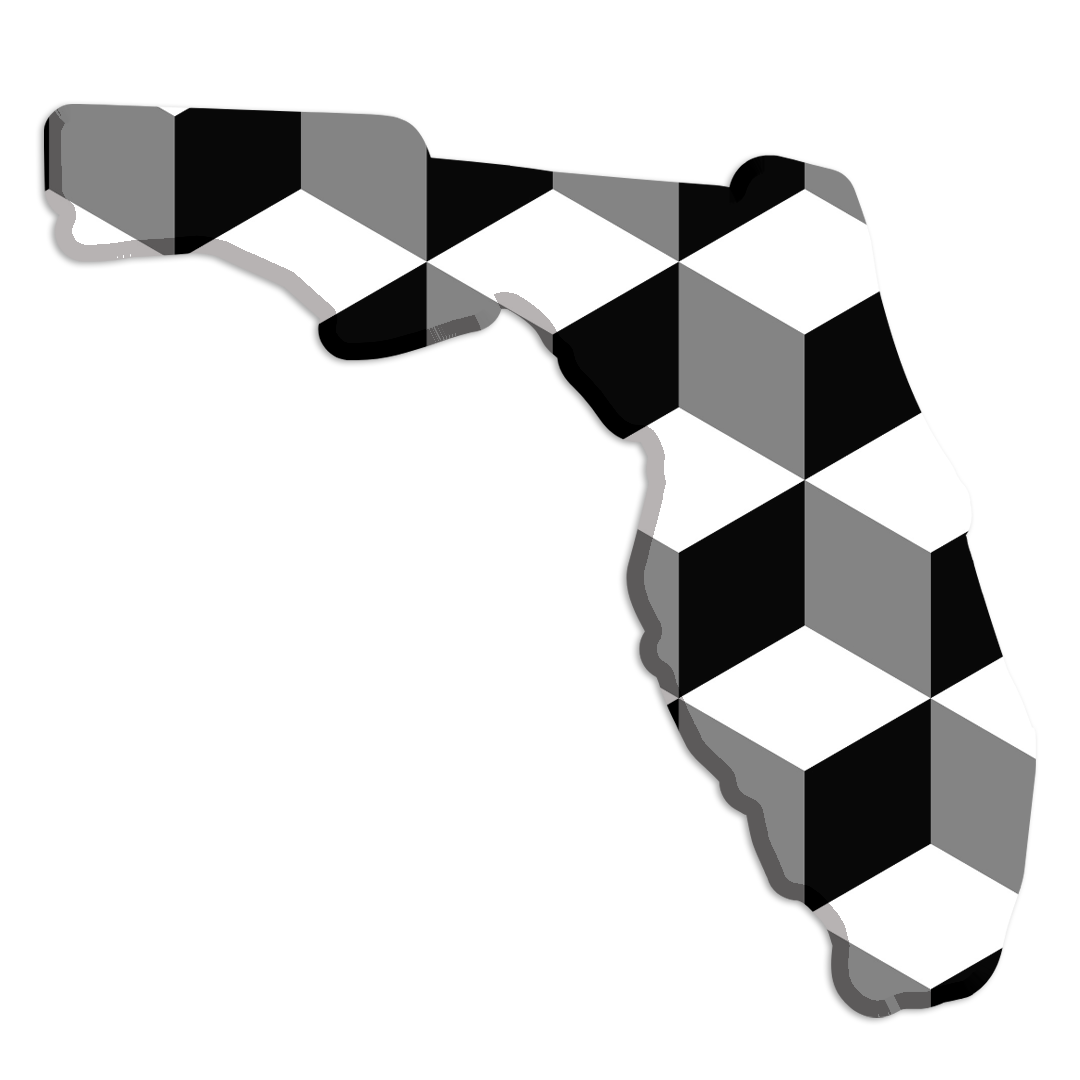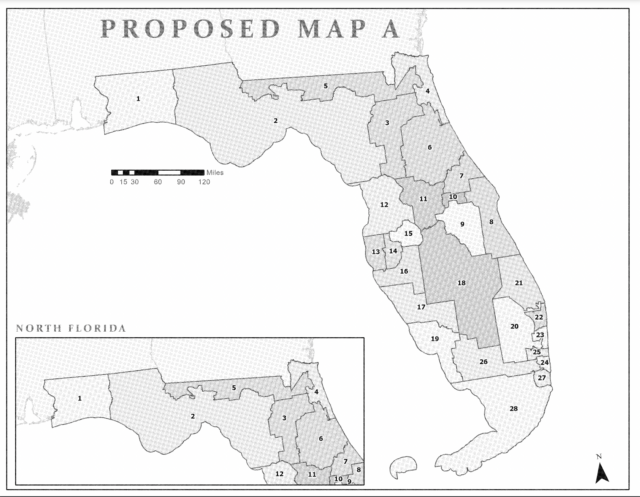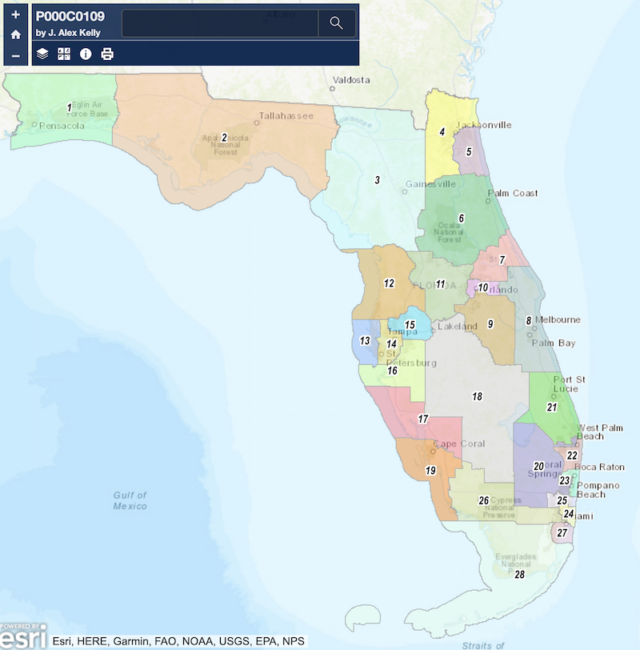
Retaining a Black-performing congressional district bears a resemblance to “political apartheid,” according to attorneys for Florida’s Department of State.
Two days after Circuit Judge Layne Smith lifted a stay on his decision to replace Florida’s new congressional map, the state wants the decision on hold again. Attorney Mohammad Jazil filed a 67-page motion Wednesday morning asking the 1st District Court of Appeal to stick with cartography signed by Gov. Ron DeSantis. The courts have asked for supporters of the challenge to reply to the motion by noon Thursday.
Jazil’s brief leans heavily on the notion the U.S. Supreme Court ultimately will favor the map designed by DeSantis’ staff precisely because it dismantles a North Florida district officials say was wrongly drawn with race as a primary motivator.
“A congressional district map that is drawn on the basis of race violates the Equal Protection Clause of the Fourteenth Amendment unless it can satisfy strict scrutiny,” Jazil wrote in the brief.
The state argues there’s no compelling reason race should determine political boundaries for the North Florida district, but a replacement map submitted to Smith’s court by Harvard professor Stephen Ansolabehere does just that.
The Ansolabehere map retains a similar configuration for Florida’s 5th Congressional District, represented now by Black Tallahassee Democrat Al Lawson. The outgoing map was first implemented by the Florida Supreme Court in 2015.
There’s little argument race drives the composition of CD 5. Plaintiffs challenging the Governor’s map argue the Fair Districts amendment to the Florida Constitution prohibits the diminishment of Black voters’ ability to elect a congressional representative of their choice. Expert testimony cited the historic presence of slave plantations in the North Florida area encompassed by the district. The district stretches approximately 200 miles and covers the Florida A&M University campus, west Jacksonville and Florida’s only majority Black county, Gadsden County.
The DeSantis map (P 0109), in comparison, spreads about 370,000 Black residents in North Florida across four majority-White districts.
DeSantis has argued there is no compelling reason to draw a district spanning Tallahassee to Jacksonville that isn’t even majority Black.
The Lawson seat has a 49% Black population, and Smith in his decision noted when combining Black voters with other minorities, that makes the seat a majority-minority district. He ordered the Ansolabehere map should be used in 2022 instead, and also ordered the replacement map to stay in place during the appeal process so it can govern election planning until an appellate court says otherwise.
“The automatic stay rule is based upon deference to planning-level government decisions. Here, the issue is the Legislature’s compliance with the state constitution — not some run-of-the-mill executive branch planning decision!” Smith wrote in an order lifting an automatic stay on appeal. “Thus, the Secretary of State is due no deference.”
Jazil argued for the state that judges should put a stay in place while considering their next move. He argued the Ansolabehere map was drawn too hastily and contained several contiguity errors in borders.
But fundamentally, he leaned heavily on the argument any racial gerrymander of a district cannot withstand scrutiny once the language of the U.S. Constitution is considered. “The court order strays from binding U.S. Supreme Court precedent,” he wrote.
Jazil pointed to a 1993 U.S. Supreme Court decision regarding North Carolina’s redistricting plan he said proves his argument. A majority in the case (Shaw v. Reno) ruled that redistricting plan violated voters’ right to “color-blind” reapportionment. Jazil pulled a particular line of the ruling in the conclusion for his brief that said a “reapportionment plan that includes in one district individuals who belong to the same race, but who are otherwise widely separated by geographical and political boundaries, and who may have little in common with one another but the color of their skin, bears an uncomfortable resemblance to political apartheid.”
That same logic applies to the Lawson district Smith wants preserved, Jazil argued.
“The Circuit Court seemingly forgot that the U.S. Constitution finds race-based sorting to be ‘odious,’” Jazil wrote.
The argument notably comes a day after Secretary of State Cord Byrd started his job following the resignation of former Secretary of State Laurel Lee. As a state Representative, Byrd voted against maps approved by the Legislature seeking to retain a Black seat in North Florida. DeSantis vetoed those maps, and the Legislature passed one drawn by the Governor’s Deputy Chief of Staff in a Special Session.
Byrd from the floor made a similar argument against keeping a Black-performing district in North Florida.
Of note, Smith’s decision and the Ansolabehere map deal only with arguments about North Florida. The legal challenge, filed by Black Voters Matter and other plaintiffs, raised Fair Districts concerns with the entire map, but sought to narrow its focus on the Lawson seat in terms of actions before the 2022 Midterms. A trial will address arguments against the entire map in a trial process that could last for years.
Plaintiffs suggested in a motion last week the appellate court should certify the Smith decision and fast-track the case directly to the Florida Supreme Court. Attorneys challenging the map have asked to have until tThursday to respond in full to the state motion, but reiterated in a response that all decisions in the case ought to be heard and decided quickly by the high court.
“A final Supreme Court determination is far more urgent here given the upcoming primary and general elections, and the need for Florida’s Supervisors to finalize their election plans,” reads a brief filed by Frederick Wermuth for the plaintiffs.
If appellate judges grant a stay on Smith’s decision, that could impact whether the issue is resolved in time to affect elections this year.
Election officials have suggested in court rulings they need new lines in place before the end of this month, and that implementing a new map even now could result in high personnel and logistical costs in order to have everything ready for the Aug. 23 Primary.
“At this point, no matter how quick, this Court’s review of the StayVacatur Order in this Court would severely constrain, if not prevent, the Supreme Court from issuing a final ruling on injunctive relief securing fundamental constitutional rights in time for the 2022 elections,” Wermuth wrote.
An order from the court calls for plaintiffs to file their brief by noon. The appellate court order calls for the upcoming brief to specifically address how an injunction on the map “preserved the status quo.” That’s a view some legal experts interpreted as skepticism of Smith’s order, which called for use of an entirely new map.
Congressional candidates can begin qualifying for the ballot on June 13 and must qualify by noon on June 17.






One comment
Tom
May 19, 2022 at 11:04 pm
As they should! And win!
Elias is a step from being indicted by Durham. He’s a Clinton bag man.
Holder gave us Marc rich pardon, gave us tea party IRS scandal, with Lerner. Gave us contempt of Congress, and Mexican cartel guns sales, in which has a U S agent killed.
Comments are closed.